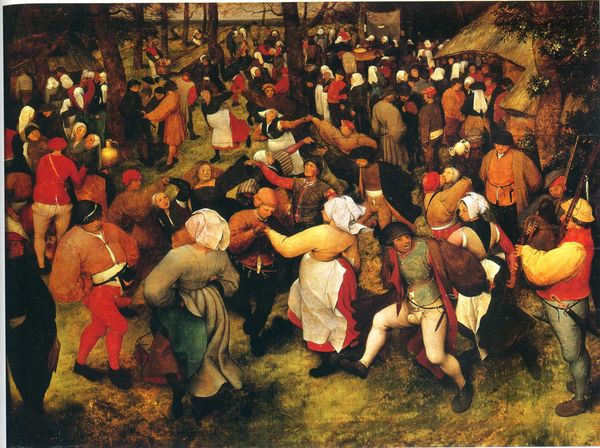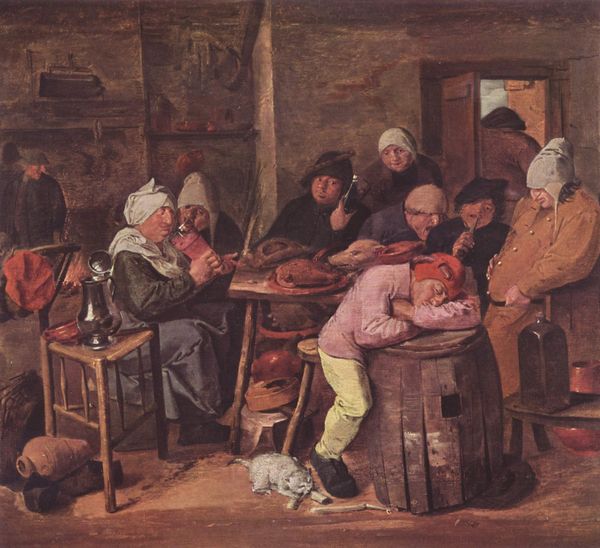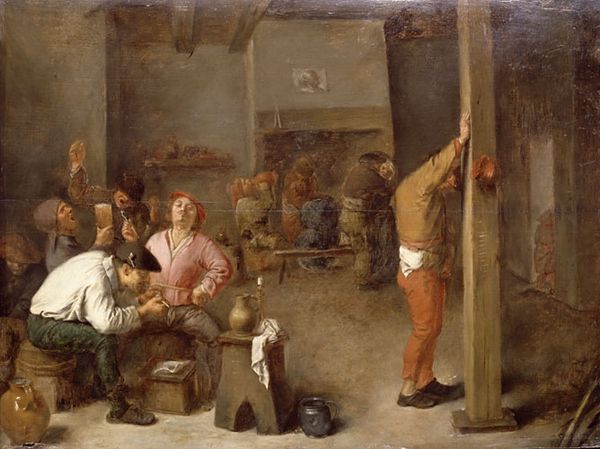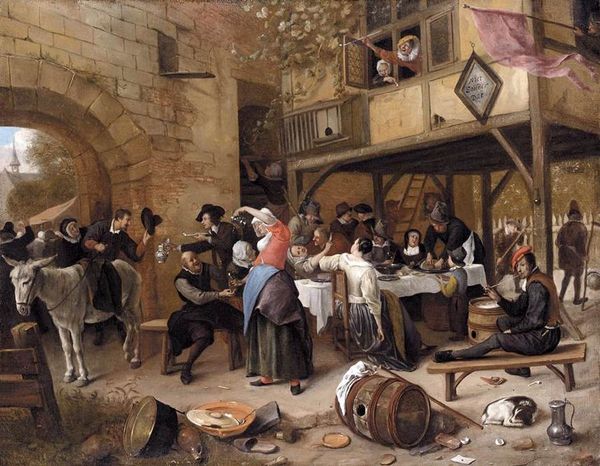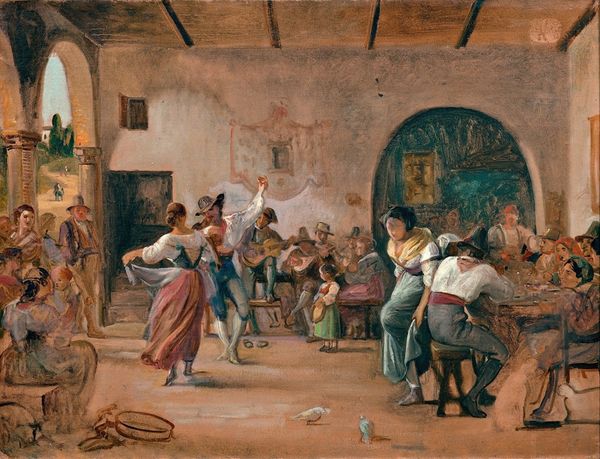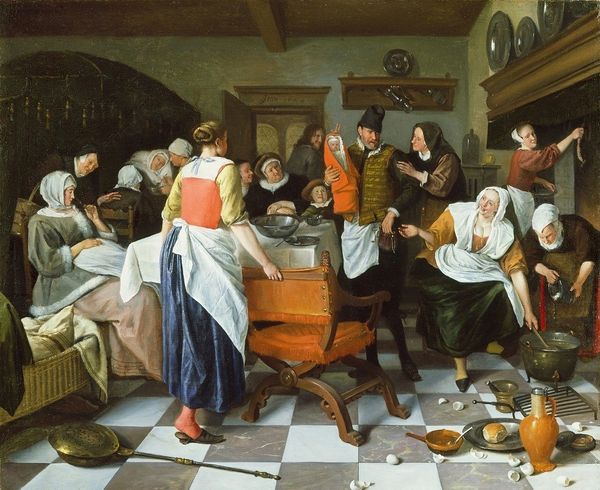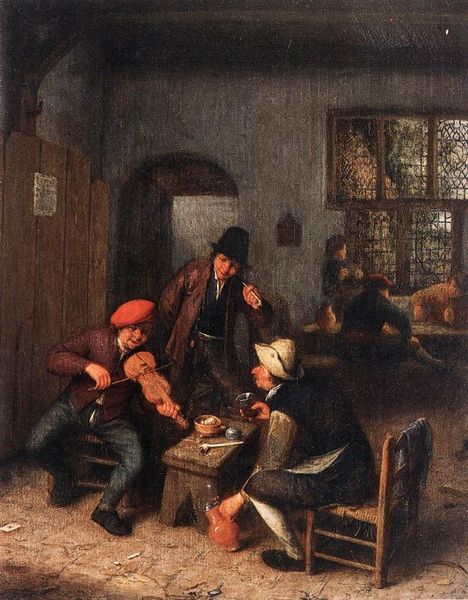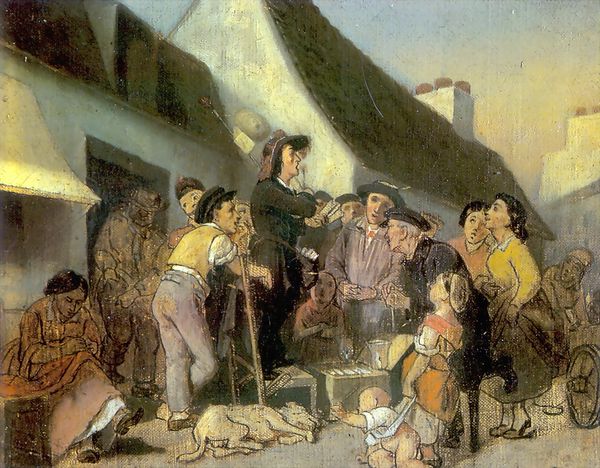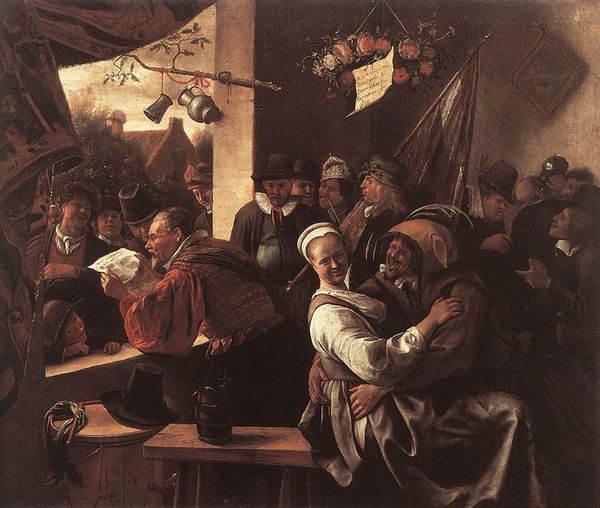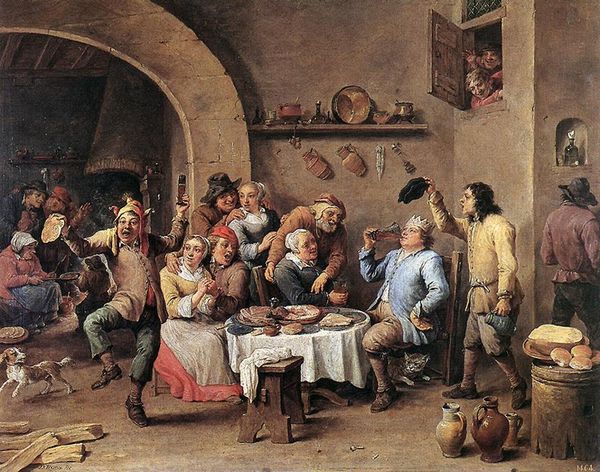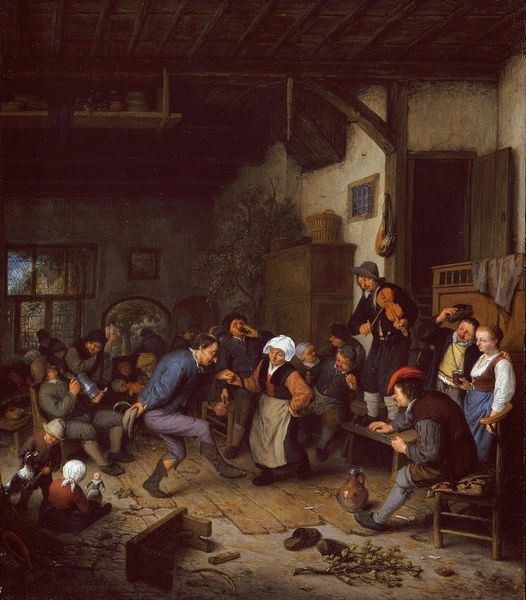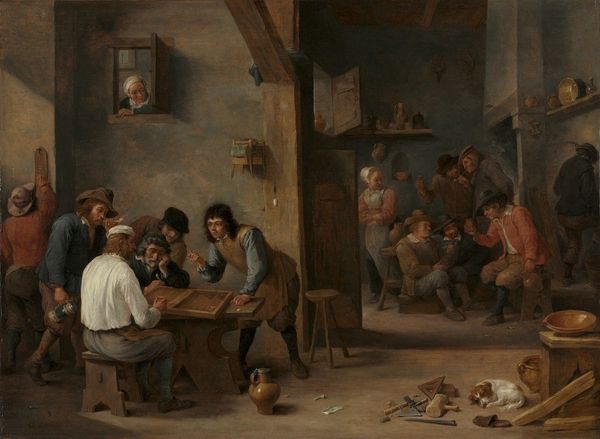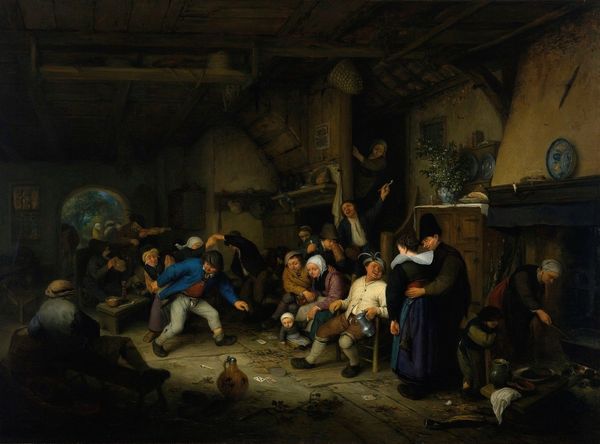
painting, oil-paint
#
narrative-art
#
painting
#
oil-paint
#
landscape
#
mannerism
#
figuration
#
cultural celebration
#
genre-painting
#
history-painting
Dimensions: 114 x 164 cm
Copyright: Public domain
Editor: So, here we have Pieter Bruegel the Elder's "Peasant Wedding," painted in 1568. It’s an oil on panel. The immediate impression is one of overwhelming humanity and perhaps a touch of…organised chaos? There's so much happening in this single room. How do you interpret this work? Curator: Bruegel's painting isn't just a snapshot of a wedding; it's a potent commentary on social structure and the lives of peasants in the 16th century. Notice how he avoids idealising the scene. These aren't romanticised figures, they're rendered with a raw, almost brutal honesty. This reflects the sociopolitical context of the time, where peasant life was often one of hardship and struggle. The artist shows awareness that peasants do the labor, pay the taxes, and provide the food on which society depends. Editor: I see what you mean. They’re certainly not sugar-coated! Does that emphasis on realism tie into any specific artistic movement of the period? Curator: Absolutely. While Bruegel was working during the rise of Mannerism, characterized by elegance and artifice, his art stood in stark contrast by embracing genre painting. Further, this image isn’t simply descriptive; it actively engages with power dynamics. For example, who isn't at the wedding and why? Can you spot anyone representing the church, government, or other landowners? Editor: That’s a great question. No, I don’t see any. Is Bruegel subtly suggesting something about the absence of authority in the peasants’ lives, or maybe their disconnect from those institutions? Curator: Precisely. Bruegel offers a glimpse into a self-contained world, one governed by its own customs and traditions, somewhat detached from the structures above them. This image, far from being a simple genre scene, becomes a visual statement about autonomy and communal resilience. Editor: This has totally changed the way I see the painting! It’s not just a scene, but a statement about their lives. Curator: Exactly. By viewing this piece, you also realize there were more people who could not commission or collect art.
Comments
No comments
Be the first to comment and join the conversation on the ultimate creative platform.

